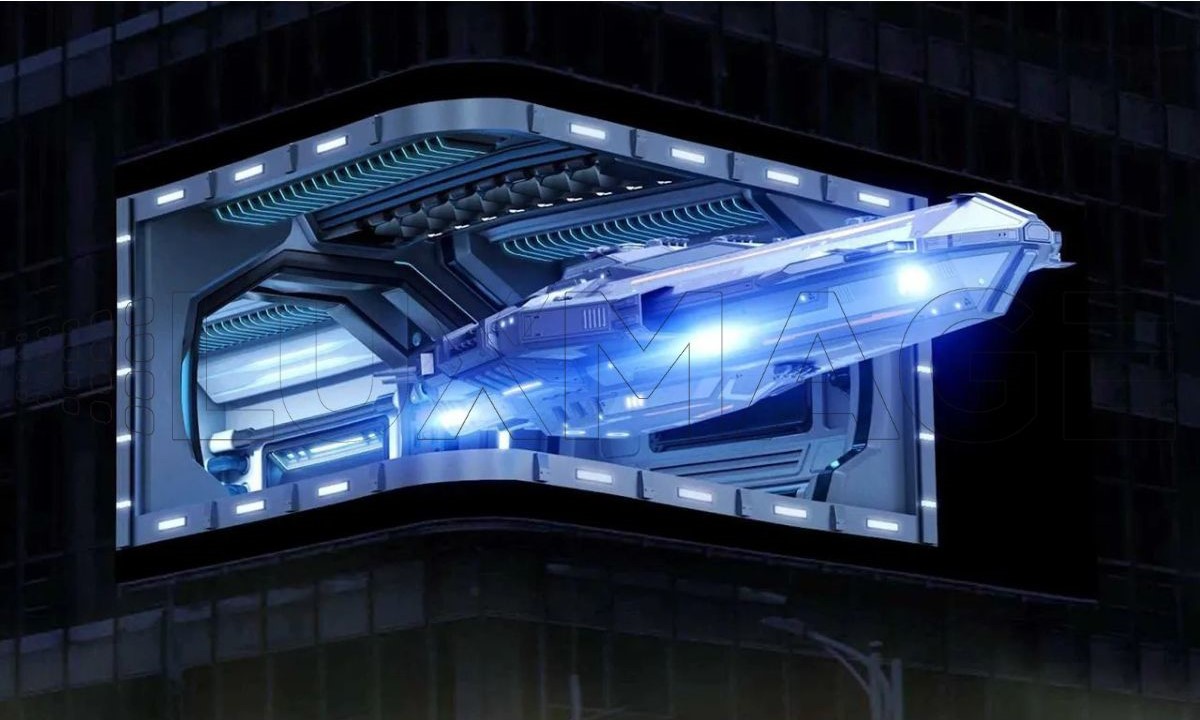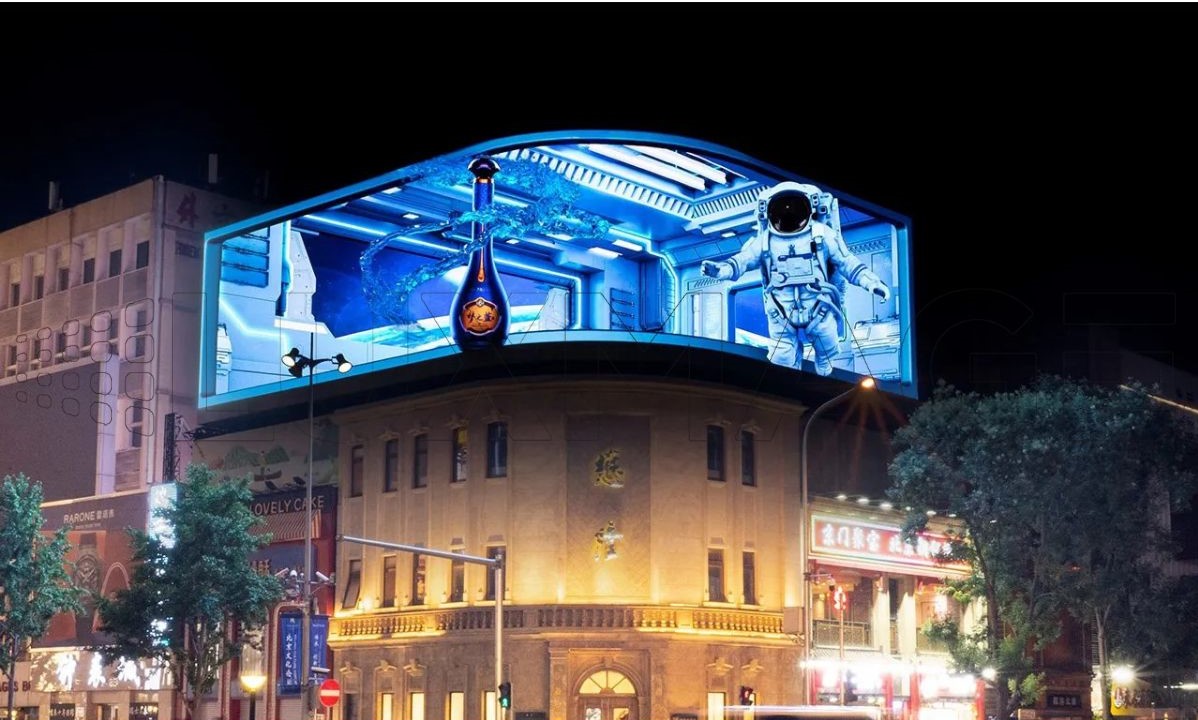A 3D LED screen is a type of digital display, capable of creating vivid and realistic three-dimensional images without the need for 3D glasses. This screen has become a new and prominent trend recently, attracting the interest and participation of many people on the Internet and in real life.
Not only is it an effective advertising tool but also a highlight of the city, creating great economic and commercial value. This screen has many advantages and characteristics compared with ordinary outdoor LED screens, such as improving the image of the city, contributing to the local economy and adapting to new consumer trends, enhancing visual stimulation and interaction, and improve the effectiveness of advertising communications; In addition, this screen is also easy to use and enjoy, without having to carry special 3D glasses, so it is loved and favored by many people.
Want to know more about the advantages and characteristics of 3D LED screens? Let's discover its secrets with Luxmage !

A 3D LED screen is a type of digital display capable of creating vivid and realistic three-dimensional images without the need for 3D glasses. This is an advanced display technology that allows audiences to enjoy 3D images more naturally, realistically and comfortably without having to wear any auxiliary devices. This creates a novel and engaging visual experience for the viewer.
To create a 3D effect with the naked eye, the 3D screen is designed with a special structure, consisting of many small LED modules arranged angled. Each LED module can emit light with a different viewing angle, creating an optical effect called parallax . When viewers look at the screen, they perceive different images from different angles, creating a sense of depth and three-dimensional space.
To enhance the 3D effect with the naked eye, 3D LED displays also need to use suitable 3D video materials, usually videos shot with 3D cameras or created with 3D software. These videos are divided into many small frames, each frame corresponding to a different viewing angle. When the frames are emitted on the screen, they create a seamless and three-dimensional image, helping viewers perceive realistic 3D images with the naked eye.
3D LED screens have many applications in different fields, such as advertising, entertainment, education, etc. This screen is often installed outdoors, on the facades of buildings, to attract attention and make an impression on passersby. This screen can display advertising content, brands, products, or entertainment, educational content, etc. with 3D images, to shock and attract viewers. This screen not only helps increase the effectiveness of advertising communications but also helps enhance the image of the city, contribute to the local economy and adapt to new consumer trends.
See more: What is a transparent LED screen? Quotation for construction and installation in Vietnam
The naked eye 3D LED screen is a type of digital display that can create vivid and realistic three-dimensional images without the need for 3D glasses. To do this, use an optical principle called parallax, which is the difference in perspective between the two eyes when looking at an object. When two eyes look at an object, they will perceive two different images of that object, due to the distance between the two eyes creating a different perspective. The brain will combine these two images to create a three-dimensional image, with depth and space.
.gif)
Naked eye 3D LED displays simulate this parallax effect by displaying two different images to the two eyes, each corresponding to a different perspective of the same object. To do this, naked eye 3D LEDs are designed with a special structure, consisting of many small LED modules arranged angled. Each LED module can emit light with a different viewing angle, creating an optical effect called parallax. When viewers look at the screen, they perceive different images from different angles, creating a sense of depth and three-dimensional space.
To enhance the 3D effect with the naked eye, 3D LED also needs to use suitable 3D video material, usually videos shot with 3D cameras or created with 3D software. These videos are divided into many small frames, each frame corresponding to a different view of the same object. When the frames are emitted on the screen, they create a seamless and three-dimensional image, helping viewers perceive realistic 3D images with the naked eye.
It is an advanced display technology that allows audiences to enjoy 3D images more naturally, realistically and comfortably without having to wear any auxiliary devices. This creates a novel and engaging visual experience for the viewer.
Is a type of digital display that can create vivid and realistic three-dimensional images without using 3D glasses. To do this, the screen needs some high technical requirements in terms of both hardware and software, to ensure the best 3D display effect with the naked eye.
(1).png)
Regarding hardware, 3D LED screens need a special structure, allowing the screen to bend to different angles, to create an optical effect called parallax. Parallax is the difference in perspective between two eyes when looking at an object, creating a sense of depth and three-dimensional space. Traditional flat LED displays cannot create a parallax effect, because the image is displayed at the same viewing angle for both eyes, creating no difference in parallax. Therefore, the 3D LED screen needs a flexible structure, which can be installed at a right angle or a 90° arc, to create different viewing angles for the two eyes.
In addition, 3D LED also needs to have high image quality, to create clear and realistic three-dimensional images. This requires 3D LED displays to have higher contrast and high dynamic range HDR, to create clear distinctions between colors and image brightness. This also requires the display to have higher brightness and refresh rate, to produce smooth and sharp images, without blur or lag.
Regarding software, 3D LED screens need a professional decoder, to process and display 3D videos appropriately. The decoder must be able to support material mapping and calibration functions, to adjust the parameters of specially shaped display carriers, such as viewing angle, depth, resolution, etc. The decoder must also be able to support the basic optimization of high bit rate decoding, to minimize latency and image distortion. 3D LED displays must also support high-resolution video encoding, high color depth, and be adaptable to a variety of video input and playback software, to create rich and diverse 3D images.
3D LED screen is a type of digital display that can create vivid and realistic three-dimensional images without the use of 3D glasses. This screen has many advantages compared to traditional LED advertising screens, as follows:

3D LED screen is a type of digital display that can create vivid and realistic three-dimensional images without the use of 3D glasses. This screen has many outstanding and superior features, as follows:
See more: LED Screen Installation Process | Notes When Installing
.png)
3D LED screen is a type of digital display that can create vivid and realistic three-dimensional images without the use of 3D glasses. This screen has many values in many different fields, as follows:
3D LED display is a unique display technology and excellent display effect, which has many values in many different fields. In the future, it is expected to play a more important and far-reaching role in many different application fields and become one of the representatives of display technology in the new era.
Vi Luc Technology Co., Ltd. - LUXMAGE
Address: 80, Street 9, Ward 9, Go Vap District, City. HCM
Hotline: 0988.895.066
Email: sale@luxmage.com
Hot news
Posted by: marketingluxmage - Date: 25-01-2024
Last Page: TRANSPARENT LED SCREEN TRENDS 2024
Next Page: Flexible Leds Screen ( Màn Hình Led mềm Dẻo)
- P1.53 & P1.86 Floor-Standing LED Display | A Modern In-Store Display Solution
- How to Choose an Auditorium LED Display | 5 Key Criteria for Cost Optimization
- Auditorium LED Display | Cost-Optimized Solutions with Advanced Digital System Integration
